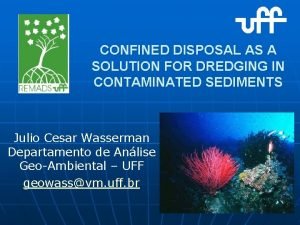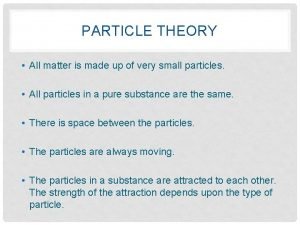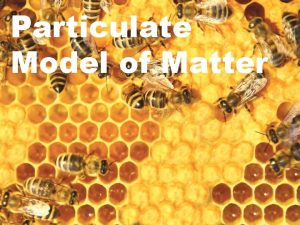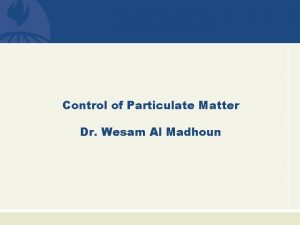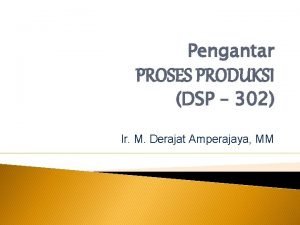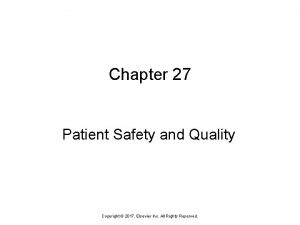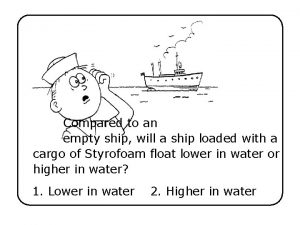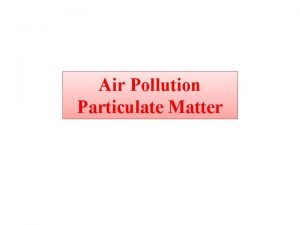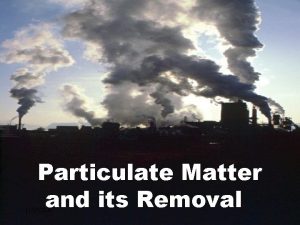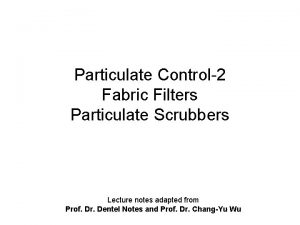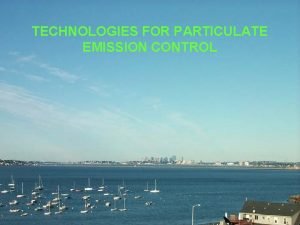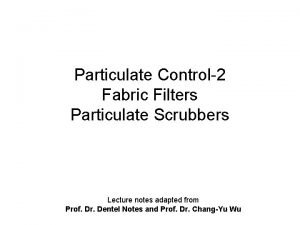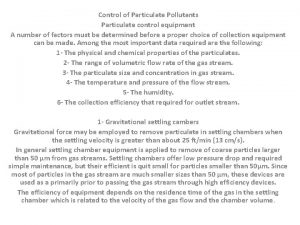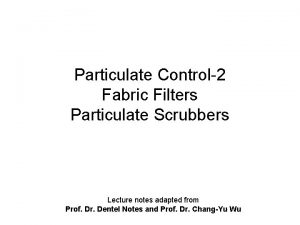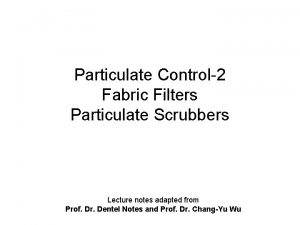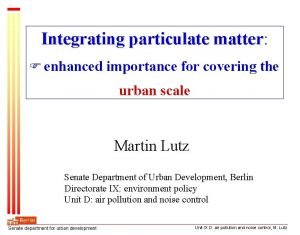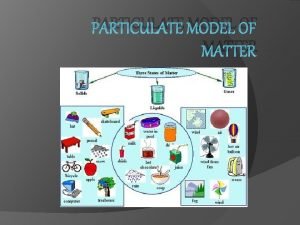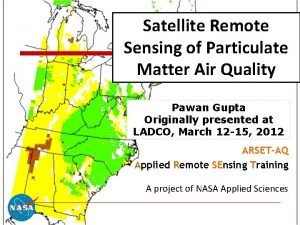Particulate Matter What Floats in the Air Alex
















- Slides: 16

Particulate Matter: What Floats in the Air? Alex Cuclis Houston Advanced Research Center (HARC)

What Floats in the Air? • • Particulate Matter Total Suspended Particulates Aerosols Haze

What Floats in the Air? Particulate matter consists of tiny particles in the atmosphere that can be solid or liquid (except for water or ice) and is produced by a wide variety of natural and manmade sources.

Size Matters • Total Suspended Particulates (TSP) range from 0 – 50 microns • Human hair is about 70 microns in diameter. • > 50 micron particulates tend to settle out of the air.

Size Matters • PM 10 – “PM 50” – too large for respiratory system • PM 2. 5 – PM 10 - can enter lungs through mouth. • PM 2. 5 and less – can enter lungs through nose.

Primary and Secondary PM • “Primary” particles, such as dust from roads or elemental carbon (soot) from wood combustion, are emitted directly into the atmosphere. • “Secondary” particles are formed in the atmosphere from primary gaseous emissions. Examples include sulfates, formed from SO 2 emissions from power plants and industrial facilities, and nitrates, formed from NOx emissions from power plants, automobiles, and other types of combustion sources.

Sources of PM 2. 5 • Primary mobile source emissions account for approximately 25 -33% of fine PM mass. • Primary emissions from cooking account for approximately 10 -15% of fine PM mass. • Primary point source emissions of fine particulate matter have not yet been estimated. • Secondary emissions of organic carbon and elemental carbon make up approximately 2530% of fine PM mass. - Dave Allen

Sources of PM 10 • • • Fly ash from power plants, Carbon black from automotive industries Various manufacturing processes, Ash from wood stoves and fireplaces Agriculture and forestry practices Fugitive dust sources (paved and unpaved roads) - Dave Allen

Sources of PM 10 • In the U. S. , PM 10 emissions from fuel combustion, industrial processes, and transportation each contribute about one-third of the traditionally inventoried particulate source categories. These source categories, however, only account for 6% of total PM 10 emissions nationwide. The vast majority of PM 10 emissions are from natural sources, agriculture, forestry, wildfires, managed burning, and fugitive dust.

Chemistry Matters The chemical composition of particles depends on location, time of year, and weather. The different constituents of PM are the result of very different types of emissions, and therefore, as emission reduction plans are developed to reduce health impacts of fine particulate matter, it will be important to understand whether particular chemical or physical properties of the PM are causing health impacts.

Travel Time Matters • How long? PM 10 particles can stay in the air for minutes or hours, while PM 2. 5 particles can stay in the air for days or weeks. • What distance? PM 10 particles can travel as little as a hundred yards or as much as 30 miles. PM 2. 5 particles can go many hundreds of miles.

Travel Time Matters Examples… • The fires of Mexico • The Dust of Africa – at times makes up 50% of the breathable particles in Miami

Travel Time Matters • Gravity is the driving force for settling, but does not control the rate of settling. • Many individual particles cannot be seen by the naked eye, but as a group they can be seen by satellites.

Deposition Matters • • • When it rains Humidity Wind Speed Size Composition/Chemistry

Smoke from Mexico April 16, 2003

Dust from Saharan Africa July 16, 2003
 A thin rectangular wooden plank is floating
A thin rectangular wooden plank is floating Suspended particulate matter
Suspended particulate matter Particle theory of matter
Particle theory of matter Particulate model of matter
Particulate model of matter Gravitational settling chamber
Gravitational settling chamber Air higroskopis air kapiler dan air gravitasi
Air higroskopis air kapiler dan air gravitasi Shaping process adalah
Shaping process adalah Is milk macroscopic microscopic or particulate
Is milk macroscopic microscopic or particulate Particulate contamination in infusions
Particulate contamination in infusions Who was mendal
Who was mendal Die blanks ceramics
Die blanks ceramics Weighting factor radiation
Weighting factor radiation Chapter 27 patient safety and quality
Chapter 27 patient safety and quality A boat full of scrap iron floats
A boat full of scrap iron floats Connotation definition poetry
Connotation definition poetry A newly admitted patient was found wandering
A newly admitted patient was found wandering Section 1 composition of matter
Section 1 composition of matter

